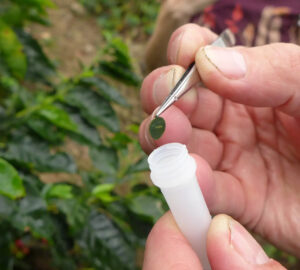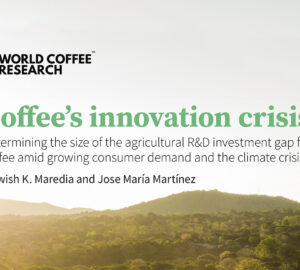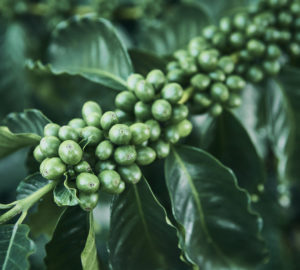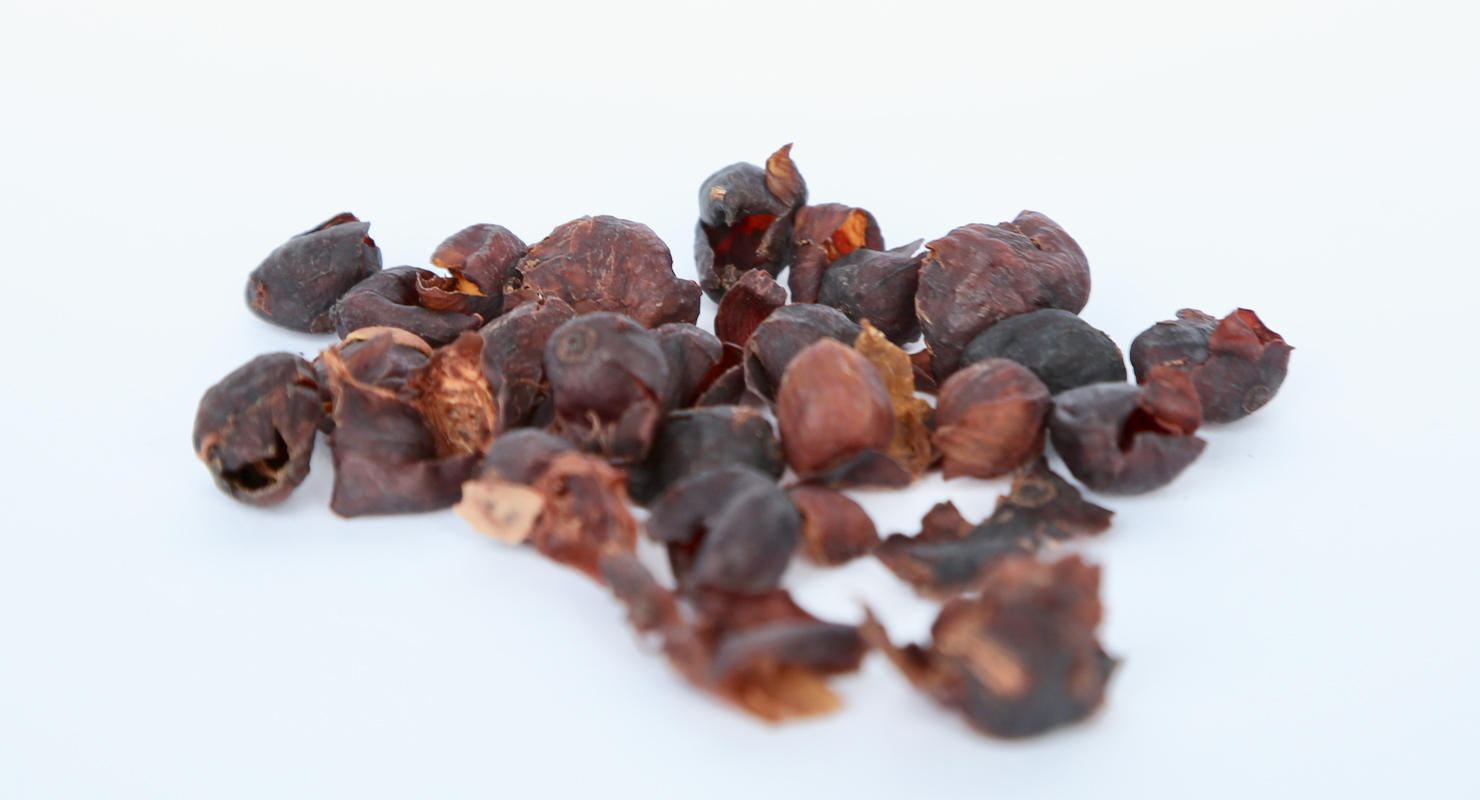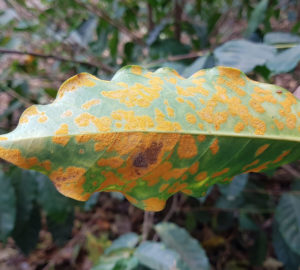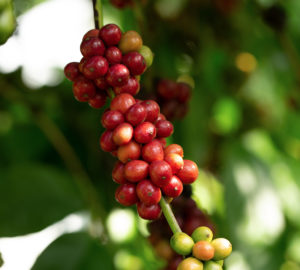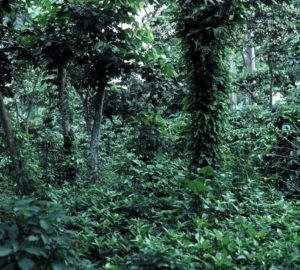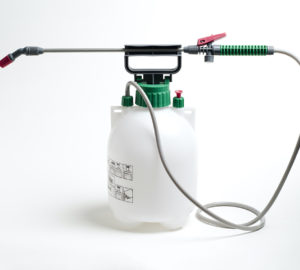By far the biggest story in coffee this week – and this month, and this year – is the ongoing coffee rust crisis currently affecting coffee crops and the farmers who tend them in Latin America and beyond. Experts estimate cross loss at upwards of 20% of the 2012-2013 harvest will be lost to harvest, and next year it could be as bad as 40%. The fight against rust, including necessary investments This post is intended as a primer of sorts on the topic, and while we’re no experts, we can at least put together the work of experts in one place.
First, a very basic listing for what coffee rust actually “is”, courtesy of the American Phytopathological Society. APS places coffee rust in its wider context:
Coffee rust is the most economically important coffee disease in the world, and in monetary value, coffee is the most important agricultural product in international trade.
News cycles require an “event” to trigger features, and for coffee rust, that event was the declaration of emergency by the government of Guatemala, and the ensuing PR efforts of ANACAFE, Guatemala’s agency for coffee growers. ANACAFE has had great success reaching news sources in the United States, including this Bloomberg News report on the declaration back on February 1st:
Leaf rust, also called roya, will result in losses of 15 percent of the 2012-2013 national harvest, Leporowski said in a telephone interview. A state of emergency was declared today by the Guatemalan National Coffee Association, known as Anacafe, which is working with the government to create a strategy to combat the fungus, he said.
More popular awareness of the coffee rust emergency came on February 8th, thanks to the New York Times. Journalist Emma Bryce, writing for NYT’s Green blog, published a feature titled “Fighting Off the Coffee Curse“:
The smattering of orange dust that marks the seasonal arrival of the coffee rust fungus, Hemileia vastatrix, has long been commonplace. But this year, one of the worst outbreaks of the rust in memory is under way in Mexico and Central America…
This NYT article is not perfect. The journalist, Ms. Bryce, repeatedly refers to a Dr. John Vandermeer, “an ecologist and coffee researcher” at the University of Michigan. Dr. Vandermeer thinks the current severe outbreak of roya can be attributed mostly to “changes in farming methods”, as opposed to, say, climate change, or the the fundamental susceptibility of arabica’s vulnerable gene pool. The article does include several other viewpoints, some attributing the outbreak to climate change, others to fluctuations in rain patterns, and it ends with a hopeful mention of progressive genetic diversification of coffee crops in Honduras. It is a complex, dense article, becoming more dense and complex upon researching the referenced doctors and studies.
Let’s hear from the boots on the ground: this must-read Flickr photoset trip report from Counter Culture Coffee green buyer Tim Hill is titled “A Living Breathing Thing – El Salvador 2013”. The photos of leaf rust and crop destruction are devastating, and in Mr. Hill’s typical fashion, the photos are accompanied by thoughtful and informative essays. Here’s an excerpt:
In the coffee industry, Roya is all that people can talk about right now, as it is severely effecting Central America and projections for the loss next year are in the millions of pounds. As a matter of fact, every producer we work with in Central America has been affected to some degree. This statement is why I started my El Salvador trip report talking about nothing but coffee leaf rust, as one of our longest relationships – the famous Finca Maurtiania – has been hit really hard.
For another look at coffee rust on the farms, this excellent BBC World Service video really takes you there, and is well worth a watch.
Even more worth your time is a visit to the excellent CRS Coffeelands blog. Journalist Michael Sheridan’s unfettered, unrestricted journalism shifts our geographic focus from Latin America to Colombia, and explores the ongoing coffee rust crisis, government response, and the experiences of the farmers. CRS Coffeelands is one of the most important coffee publications in the world, and you should be reading it. Here’s more from some specific Coffeelands coverage on roya, though we do strongly suggest you peruse the site beyond this single link:
Since 2008, production losses to coffee leaf rust have been significant. In response, Colombia’s coffee authorities have mounted a massive campaign to replace varieties susceptible to rust with the new, disease-resistant Castillo cultivar. Between the production losses and renovation efforts that have taken large swaths of the coffeelands out of production temporarily, the impact on Colombia’s coffee sector has been devastating.
Last, we mentioned in the headline the idea that there’s hope for whole nations of farmers trying to overcome this outbreak of roya. For more, we turn to Dr. Tim Schilling at World Coffee Research:
Schilling says it is likely that, “wild and extreme climate events like this will continue and cause more problems as time goes on. We simply must invest in research to provide solutions to farmers while governments and the UN try to fix the global climate crisis.”
Most Central American coffee countries have already harvested this year’s crop while others continue to harvest. As such, the damage is done. Farmers, governments and development agencies now pose a question as to how coffee rust disasters like that of Central America can be avoided in the future. One of the surest short-term protection actions involves the application of a systemic fungicide to the coffee plant before the disease damages the plant. Dose, timing and frequency depend on local conditions and recommendations. It is important to start the application with the first rains.
“Although the application of fungicides can be effective in the short term”, Bertrand says, “it is nevertheless expensive, laborious, and environmentally unsound”.
The best way to protect against rust in the medium and longer terms is through the use of a resistant variety of coffee.
The worst case scenario for farmers? Imagine losing half your paycheck. But the real catastrophe would be to throw up our hands, feel bad for the farmers, and move on to a cup from somewhere else. The folks at World Coffee Research are trying to stem the tide against future catastrophes like the one that farmers in Latin America are currently facing. You can learn more about World Coffee Research by visiting their website, and we invite you to get yourself, or your roaster, or the company you might own involved with their progressive and important work.
Original photography by Tim Hill.











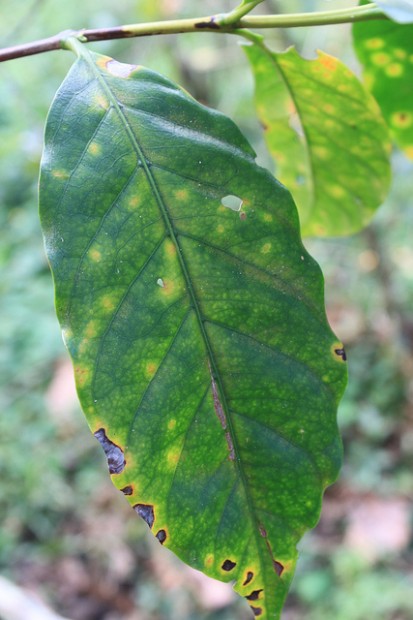


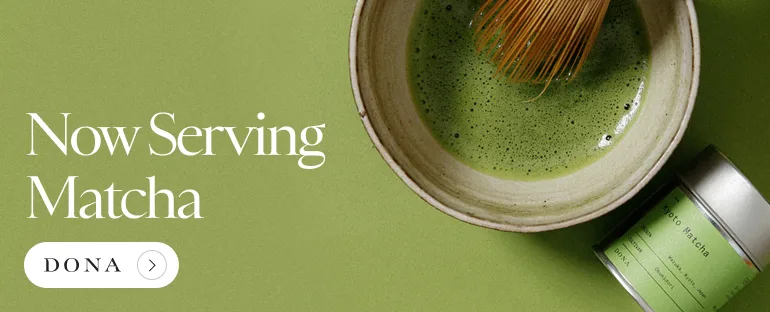

![[digital version] coffee varieties poster 24x36](https://sprudge.com/wp-content/uploads/2023/09/wcr-poster-300x270.jpg)


